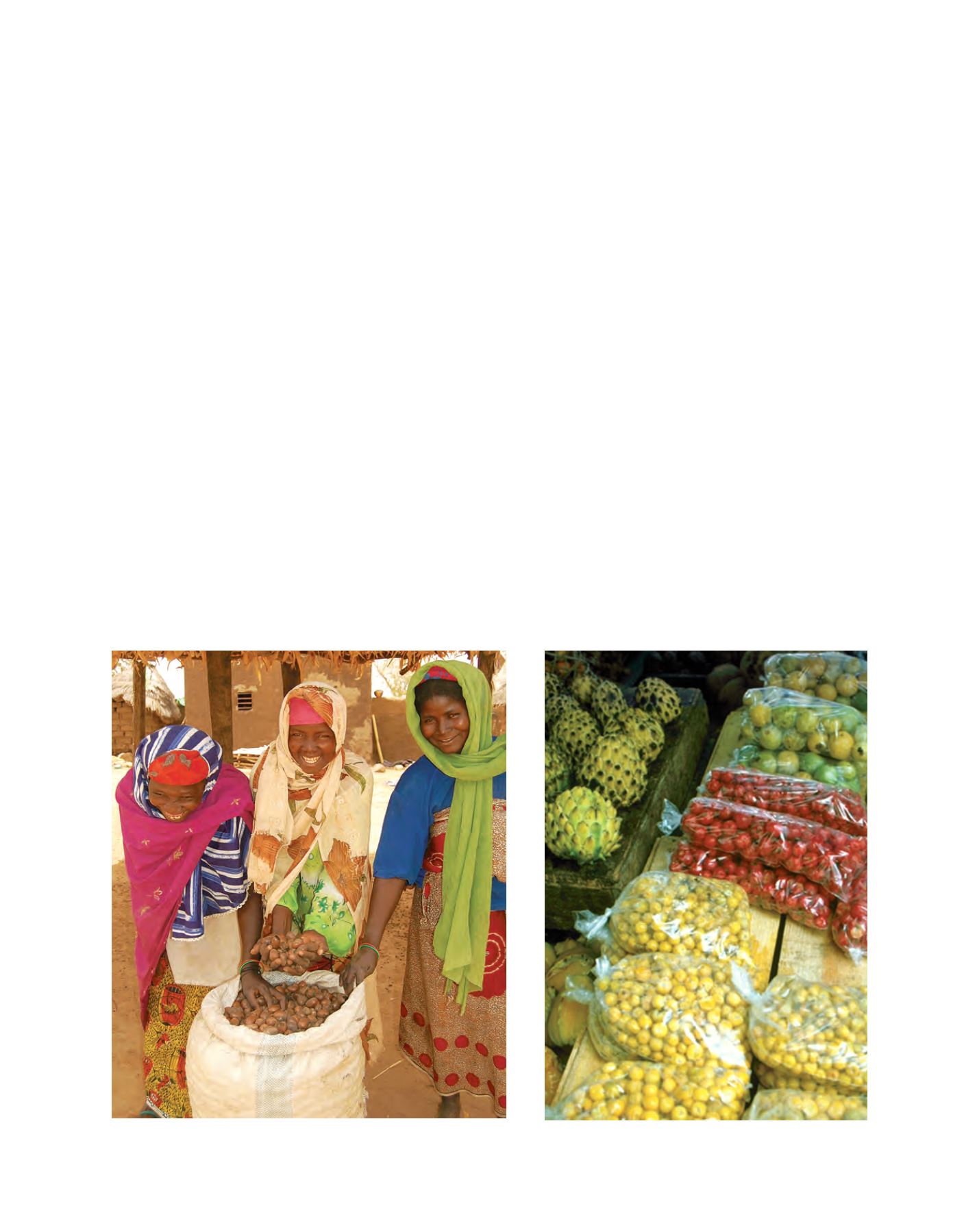

Income
Trees are an integral part of the agricultural systems of many
small-scale farmers, providing both cash and subsistence
benefits. These benefits come from trees that are planted
or managed on farms as well as from forest resources in
communally managed, open-access or state-managed
areas. In arid zone countries, with low forest cover, trees
and shrubs enhance the productivity of agricultural and
livestock systems on which many pastoral communities
depend. Small and medium-sized forest-based enterprises,
which have been successfully linked to markets, have
enhanced income benefits for local communities, enabling
them to purchase food to meet their dietary needs.
Fuel
Fuelwood and charcoal are the main sources of fuel for
a majority of the population in developing countries
and are necessary for cooking food. Availability of these
resources therefore has a direct impact on the quality of
the food consumed.
Future actions
Strengthening the positive contributions of forests and trees
to food security requires a strong political commitment and
working partnerships at various levels, from subnational to
international. The FAO Forestry Department is involved
in a range of actions that seek to improve the significant
contributions that forests and trees make to sustainable live-
lihoods and the eradication of hunger and poverty.
Climate
A range of human and climatic factors are expected to increase
the scarcity of arable land, hence constraining future food secu-
rity demands. Already in many places, large-scale deforestation
and unplanned land-use changes triggered by increasing demand
for food, fibre and fuel have caused biodiversity loss, reduced the
productive capacity of systems, affected water availability and
limited the possibilities for fuelwood collection by the poor, conse-
quently affecting cooking and processing of food. Climate change
is expected to put the food security of millions more people at risk
in the coming years.
All these factors pose a threat to the multiple benefits forests
provide, intensifying the challenge of achieving food security and
nutritional well-being for the world’s population. This further
increases the vulnerability of poor people to various forms of
shocks.
The role of forests and trees
Food
Forests and trees on farmland contribute to food security for millions
of people around the globe. Providing fruits, edible leaves, tubers
and nuts, they are a direct source of food, animal fodder and cash
income for poor households that are nutritionally at risk.
Habitat
Forests are a habitat for wild animal species, including birds and
their eggs, insects, rodents and mammals, which are often important
components of the diet of people living in close proximity to forests
and fallow areas.
[
] 90
Women in Burkina Faso plan to plant shea trees and sell more shea nuts
Forest foods from a Brazilian market
Image: Tree Aid
Image: Roberto Faidutti, 1999
















